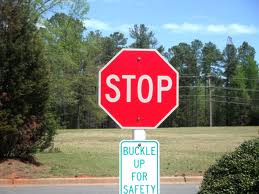When you enter a trade a stop loss is the exit tool you use to know when it is time to get out of the trade because you are losing money. A stop loss is the tool you use to prevent a small loss from becoming a big loss. This is one of the most important elements in your trading as big losses are the primary driver of unprofitable trading.
All your trades should end in one of only four ways:
- A big win.
- A small win.
- Break even.
- A small loss.
No trade should ever end in a big loss and a stop loss is how you remove the big losses from your trading.
A stop loss should be far enough away from normal market action in your time frame but close enough stop what would be considered a big loss in your own trading. Of course your position size works in correlation with your stop loss and you shouldn’t be trading so big that you still have a big loss when your stop is triggered.
Here are five stop loss strategies using price action as your guide:
- Exit based on the break of a key moving average support. If you are trading an uptrend and a key moving average that has been acting as support is lost and price closes below it, get out.
- Exit based on a percentage of loss on the position capital from the entry point. If you buy a stock your exit strategy could be to stop out for a loss if the stock price drops more than 5% from your entry price. If you buy it at $100 then your stop loss would be a drop below $95.
- Your stop loss could be a time stop. If you enter a stock at $100 with a profit target of $110 for a swing trade and the stock is still trading at $101 three weeks later, one strategy is to simply exit to free up capital for better opportunities as the stock has failed to meet your return goals in a reasonable time frame. Of course it depends on your own system’s parameters.
- A stop loss could be based on a technical indicator like RSI breaking below a key reading, price going below a lower Bollinger Band, or a MACD cross under. Technical indicators can also be used as tools to create good risk/reward ratios and setting the level to exit based on the risk.
- Volatility stop: Stop out if the market or your stock has a big expansion in its daily price range, or starts moving against you the full daily range. You either cut your position down in size, or get out due to increased risk based on volatility expansion. The ATR (Average True Range) is a one way to quantify this.
There are many ways to cap your risk to the downside and let you know that your trade is probably not going to work out because you are already losing money. Any good trading system should have not only entry signals but exit strategies to keep your losses small.
